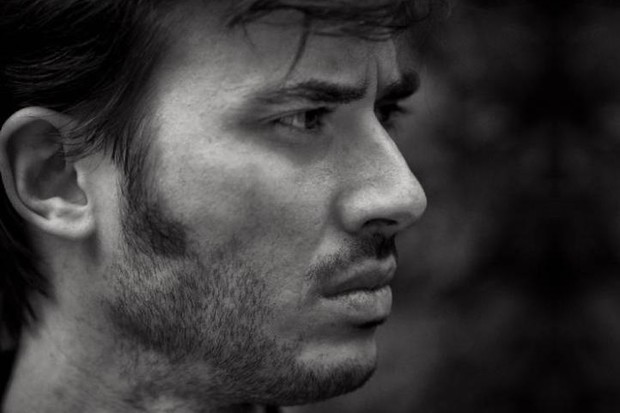Juan Barrero • Director
"I learned to direct by editing other people’s films"
- The Inner Jungle, Juan Barrero’s debut feature is finally released in Spain. We chatted with the director

Finally, released last Friday, 17 October, in Spain, The Inner Jungle [+see also:
film review
trailer
interview: Juan Barrero
film profile] (review), Juan Barrero’s debut feature produced by Luis Miñarro (Eddie Saeta) and Labyrint Films, which received the New Waves award at the Seville European Film Festival. We chatted with this director, born in Salamanca in 1980 and protagonist, together with his partner, Gala Pérez (seen in Antígona despierta), of this risky and unusual film about love, discord, memory and nature.
Cineuropa: What pushed you to direct such a personal film?
Juan Barrero: The drive to film Gala was haphazard: the first thing we filmed was her pregnancy. I started thinking about the movie when I was shooting a documentary in the jungle in Costa Rica: she rang me to tell me that she was pregnant. I tried to express my uncertainty, fear and terror of fatherhood through the images of that dangerous and impregnable nature. When I returned, we filmed other moments and Gala became part of the game: I could see that she was a cinematographic animal, very photogenic; that she worked well on camera. Those images were put away for almost three years, until I met Luis Miñarro, who encouraged me to finish the movie.
But what was about these takes that seduced you so much?
I enjoyed the fact that the camera was in an awkward position: there were some really explicit and risky situations and scenes, which caused the viewer to feel uneasy and to question themselves: they would probably wonder what they are doing there, between the bodies of two lovers. As a director, I’m interested in where the camera is positioned: I like when your position as cameraman causes you to question yourself, your prejudices and your cultural heritage. Thereafter we completed the second part of filming. It was more professionalized and with a more marked core idea. There was no screenplay, but we had a clear direction.
Did your previous experience as film editor help you in this process?
Totally: you learn to direct by editing other people’s films, by discovering the real needs, because that’s when the moment of truth arrives. You can go in a range of directions with the same raw materials, like with a recipe and its ingredients. My experience as film editor allowed me, when working with Gala, not to doubt as much as I would have done had I not had that experience and therefore I didn’t pass on any doubts to her. It allowed me to edit the movie mentally, off the cuff and on screen, knowing what I would need, which shots, which scenes and what resources.
Who made up the team?
It was a small team, although in privacy it was just the two of us. Everything is assembled with that tone of unique shots and testimonial moments, but without some key people –the editor, the sound engineer, etc.- it wouldn’t have been possible.
How long did the whole process take?
If you include the conversation with my aunt that appears in the movie, which took place in 2004, it’s been a decade. But leaving that aside, it lasted from 2008, when I was in Costa Rica, until the end of 2012.
(Translated from Spanish)
Did you enjoy reading this article? Please subscribe to our newsletter to receive more stories like this directly in your inbox.
















